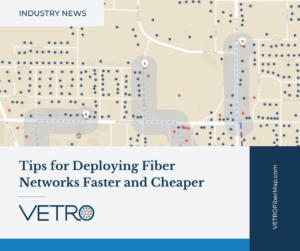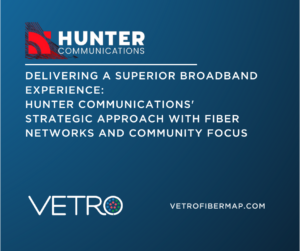Increasingly, local governments and Internet service providers (ISPs) are developing public-private partnerships (PPP) to deliver broadband services and close the digital divide. These partnerships, already well-established in Europe, are finally gaining popularity across the United States. This wave of collaboration emerged in the early months of the pandemic when lack of connectivity in thousands of communities across the country became all too apparent. Since then, we have witnessed remarkable growth, as billions of dollars from both public and private sources are being invested in cutting-edge broadband infrastructure.
Now, with the availability of government funding, such as BEAD dollars coupled with various other grants, communities and states have an ideal opportunity to expand and maximize their broadband deployment efforts by encouraging partnerships with private ISPs. This model can come into play if the community desiring a next-generation fiber network opts to directly build, own, or operate the network and creates a partnership with the private sector.
The results have been successful in over 700 communities nationwide. Using effective private public partnerships can pave the way for universal service, at an affordable price. This type of partnership can provide a seamless delivery of reliable, high-speed fiber broadband with unlimited capacity for future expansion and growth. A comprehensive engagement of a community can shape a broadband project in a way that supports the community, increases take rate and addresses head on digital equity.
Ways to Make the Most of PPPs
Public Private Partnerships come in as many flavors as ice cream. There are several basic options for communities and providers to consider.
Who owns the infrastructure. Public ownership gives the community long-term control over the infrastructure asset (think roads), and removes the capital expense from the private partners balance sheet. This is the first layer of the partnership, and the decision of ownership of the asset should be the first thing addressed by any public entity seeking to partner with a private company.
Who designs, builds and maintains the network. Often communities work with a private sector partner to design and build the network. Usually this is done through an RFP. Communities can also RFP out the maintenance of the network. If a community is part of an electrical co-op, there is sometimes an opportunity to do this work “in house”, but most communities engaging in this work develop a partnership to outsource this work to the private sector who has the expertise and experience to build, design and maintain a network.
Who operates over the network? The private sector can have a major role to play in this partnership when it comes to operations. Clearly, the expertise on network operations usually lies in the private sector partner. Some communities opt to sign a “franchise” agreement with one ISP, with possible revenue sharing with the community and contracted commitments for service and cost. However, communities can also opt to build an “open access” network where a number of ISPs can operate and provide services to customers. These networks are open to any number of ISPs who wish to deliver internet services to that community. This increases choice for the customers, and often helps to improve service and decrease the subscription costs.
Other options include the public entity working with a number of private providers to build out a large region, with the public entity taking responsibility for applying for funding, and meeting all the requirements that the funding requires. Public entities like regional utility districts, large scale cities or towns, electrical co-ops, or even state broadband offices are all potentials for this type of partnership effort.
We sat down with Peggy Schaffer, the former executive director of the ConnectMaine Authority, who was instrumental in securing $30 million in federal grant to implement a public/private partnership to bring broadband to over 15,000 customers. This partnership engaged three different ISPs and covered seven different project areas. She shared her best practices for making the most of public-private partnerships. They include:
Determine the lead applicant: “You want to take this initial step and identify whether the state or a political subdivision of the state will take the lead on the project,” she advises. This is typically specified in the Notice of Funding (NOFO) and securing the involvement of the public entity (State, regional entity, or co-op) is crucial to ensure project viability. “in Maine’s case, I knew that nobody else would do this if the state didn’t. So, I talked to my board chair, and said, we should apply for this, and we should apply for as much money as we can get out of it.”
Read the funding request carefully. Whether it is a grant, a notice of funding opportunity or a Request for Information (RFI) or a Request for Proposal (RFP) from a community: Understanding what the organization with the funding is looking for is key to every effort. “Evaluating costs and the number of people served is essential,” she says. Understanding the areas that meet the criteria, and the requirements around match and ownership are critical to putting together a partnership. Tools like VETRO can help States and communities identify and visualize areas that have low quality service that meet the funding request requirements. Knowing what the data is about who is served, density, current infrastructure, and census information is key to putting together a successful partnership. Its also essential that this information is transparent and easy to access. VETRO has that capacity built into is powerful Broadband Intelligence Platform.
Be Clear and Specific about what information/partnership you are seeking. If communities are looking for a private sector partner to be part of a project, they need to be explicit in a RFI or an RFP. Knowing what type of partnership communities are looking for helps private sector partners evaluate the opportunity, and whether they want to join in a partnership. RFI and RFPs can gather responses from ISPs and assess which projects align with the goals of the community, including cost-effectiveness and universal coverage.
Score applications effectively: “For most funding opportunities, applicants must prioritize lowering costs and connecting more people in order to score higher and get more grant money,” Schaffer advises. “Utilizing robust data and showing the methodology used to identify unserved locations within partially served census blocks is critical to successfully navigate the challenging process.” This is where having a tool like VETRO can make a huge difference. “For example in the grant Maine applied for, we were able to go back to providers and say, look, here’s the map that shows us that this area would be good for this project, and would you be interested in putting a project together for this area? Because of VETRO’s data visualization mapping capabilities, we doubled the size of the grant to almost $30 million.”
The Value of Collaboration:
Collaboration is paramount for successful PPPs. Collaborating with experts who possess data manipulation skills and experience in managing grant programs can significantly enhance the application process. Schaffer points out that “engaging local leaders, citizens, and interested ISPs fosters collective decision-making and builds strong partnerships. By opening communication channels, you enable ongoing improvements, evaluate progress, and you have flexibility to adapt plans and tactics as needed.”
Community Planning:
Community planning plays a vital role in achieving successful projects. Through thorough planning and years of preparation, states like Maine have laid the groundwork for effective partnerships. In Maine’s case, the Blue Hill Peninsula received numerous responses to the RFI due to their commitment to the cause and the availability of funding and essential tools. Maine has also established public instrumentality entities like the Maine Connectivity Authority to handle federal funding efficiently and be flexible in their operations including grants and community engagement.
Conclusion:
States and local governments now have many opportunities to leverage federal funding and bridge the digital divide. Public-private partnerships are crucial in achieving widespread connectivity. Collaboration, meticulous planning, data-driven decision-making, and flexibility are key elements to ensure the success of these partnerships. By bringing together willing ISPs, communities, and experienced consultants, the goal of providing high-quality, affordable services to all can become a reality. To learn more, please visit “A Public-Private Partnership Success Model” webinar hosted in partnership with Telecompetitor.


